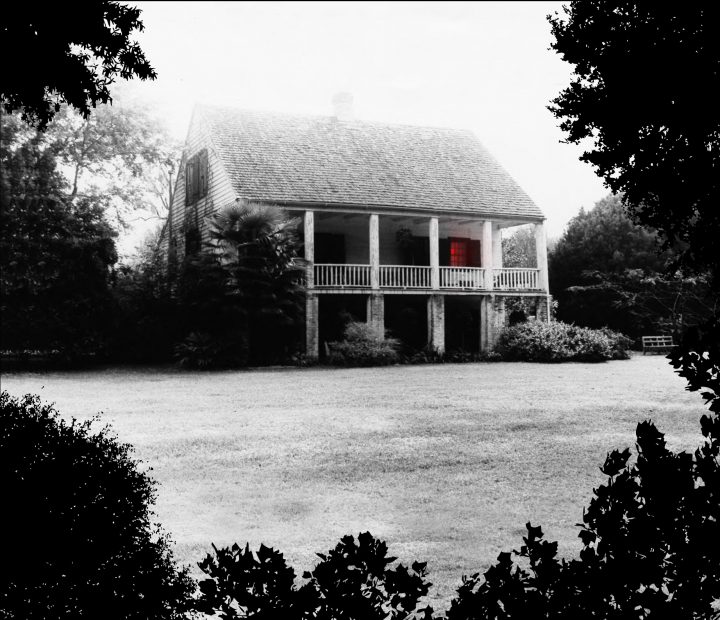Rating: 2 Stars
- ADVERTISING - continue reading below -
Age Recommendation: 17+
Warnings: Mentions of specific body parts in reference to lust or scenes involving sex, strong language (mainly towards the end of the novel), domestic violence, racist characters
Genres: Historical fiction, Drama, Mystery, Suspense
Pages: 204 (paperback edition provided in exchange for a review)
“It was 1934, and my mother, my little sister Gracie, and I were living in Ida Mae Wilson’s boarding house in Savannah. My father was on the road to Atlanta, trying to scrape together enough to buy more wares to sell, and he had left us behind. I didn’t mind. It was one of the few times when I could rest from out nomadic existence. When I felt that we had a home, even if it wasn’t ours.”
The Devil in Canaan Parish, by Jackie Shemwell, is an intricately detailed account of Southern Louisiana in the 1950s. The most interesting part of the novel, far and away, was the level of research that obviously went into the writing of this story. The biggest problem I had came from trying to find the plot. Upon finishing, this is the key information I feel I’ve been left with as a reader (without including spoilers, of course):
Bram and Sally Palmer met at university and she decided to marry him despite the fact that he didn’t really fit in with her parents’ well-off lives in Techeville, Louisiana. They’ve been experiencing problems with their relationship for years now, and Bram is really quite tired of it. One night, a storm rips through town and at one store, a necklace is stolen, while at another, a Cajun girl named Melee washes up looking for a place to work. Bram brings her home to work in their household and from there a lot of trouble ensues.
Sally has been wanting to have a baby but is quite ill. Bram takes a liking to Melee, even though he shouldn’t. And a lot of secrets are kept.
Basically, it’s the making for a great domestic, realistic fiction novel. But I had a number of problems with it, which I feel I ought to address in order to explain the rating I gave this book. First, though, I do want to say that lovers of historical fiction – particularly set in the American South – could very well adore The Devil in Canaan Parish. I’m not saying that anyone shouldn’t. But I, personally, had trouble reading it.
The other main problem, besides my struggling to find the story arc, was the editing. It seems like the text wasn’t edited for formatting, and may not have been line edited before the final draft was published. By that, I mean that there were a large number of typographical errors. Paragraphs weren’t indented, punctuation was missing, quotation marks did not appear at the beginning of a new paragraph when the same character continued speaking. The final line of The Devil in Canaan Parish is neither indented nor punctuated in any way. I don’t know if that was a stylistic choice, but it didn’t match the central portion of the text. Most of the errors occurred at the beginning and end. The other typing-based issue came from words being switched out incorrectly (for example, “here” instead of “hear”).
I do want to look at the plot as well, without giving too much away. It wasn’t until about the 100-page mark (in other words, halfway through the story) that the plot actually picked up. The first half is almost entirely backstory, which is fine and necessary in its own way, but perhaps it could have been worked in throughout the story so that the current plot could take more precedence?
- ADVERTISING - continue reading below -
Something I did appreciate, however, was that nearly all of the characters were important to the plot, rather than thrown in as extras. Even minor characters ended up being important, although one of the main plot devices at the end came out of nowhere and wasn’t hinted at beforehand, so that confused me greatly.
If the reader goes into this story wanting as much historical detail as possible and is the sort of person who loves backstory and character building of that nature, the editing errors may not bother them. I’m the sort of person that notices those things easily because editing novels is something that I want to do in the future. And I wanted so badly to enjoy The Devil in Canaan Parish. When I was offered the chance, I put it at the top of my list and the front of my schedule, and I think that maybe I just got too distracted to fully take it in.
The descriptions are easy to understand, and the opening paragraph is both charming and beautiful. It isn’t hard to imagine that, were those errors not in place and if the backstory wasn’t so overwhelming at the beginning, I would have easily fallen in love with The Devil in Canaan Parish.
Views: 5



